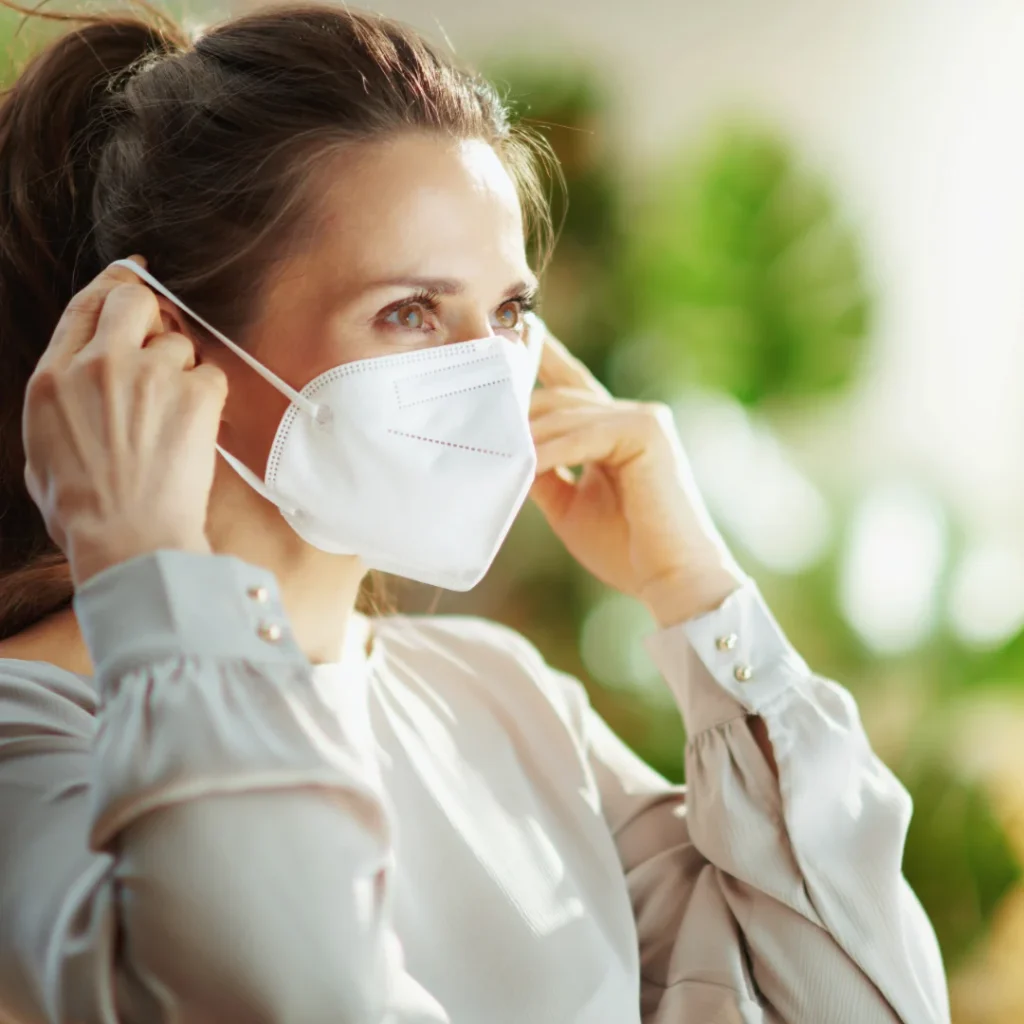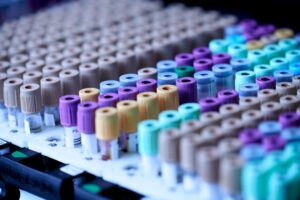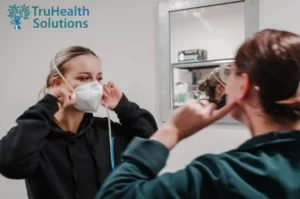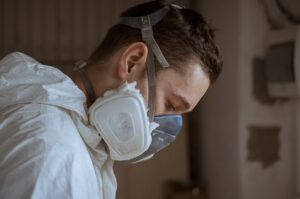In the face of airborne threats, personal protective equipment is our first line of defense. People commonly use N95 respirators, surgical masks, face masks, and barrier face coverings.
But do you know the key differences between these masks? Understanding these differences is crucial for effective protection.
This guide aims to shed light on these differences. The exploration will focus on the distinctive features of N95 respirators, surgical masks, facial coverings, and barrier face shields.
We will also discuss the guidelines for their use. This includes the importance of respirator fit testing for N95 masks and the proper use of each mask type.
Whether you’re a healthcare professional, an industry worker, or a concerned individual, this guide is for you. Let’s equip ourselves with the right knowledge to stay safe and protected.

What Are N95 Respirators?
N95 respirators are a type of filtering facepiece respirator. Engineers specifically design them to filter at least 95% of airborne particles. The tight seal they form around the nose and mouth is critical for their effectiveness.
The National Institute for Occupational Safety and Health (NIOSH) tests and certifies these respirators. N95 respirators must meet stringent requirements for filtration and ability to breathe easily. These standards ensure they provide reliable protection against harmful particles.
The design of N95 respirators includes multiple layers of synthetic material. These layers create a web of fibers that traps particles as air flows through. This makes them effective against both large and small particles, such as dust and pathogens.
Key features of N95 respirators include:
- Tight-fitting seal around the face
- High filtration efficiency for airborne particles
- Certification by NIOSH for safety and effectiveness
Because of their robust protective features, N95 respirators are crucial for healthcare workers and frontline responders. They are especially important during situations involving infectious diseases. Proper fit and use are essential for maximizing their protective benefits.
The Role of Surgical Masks in Infection Control
Surgical masks play a significant role in protecting against the spread of large respiratory droplets. Healthcare settings primarily use them to protect patients and staff from infections. Unlike N95 respirators, surgical masks are loose-fitting.
These masks act as a barrier to block droplets, splashes, and sprays that might contain viruses or bacteria. While they offer some protection, they do not filter smaller airborne particles effectively. Therefore, they do not provide the same level of filtration as N95 respirators.
The Food and Drug Administration (FDA) regulates surgical masks as medical devices. This ensures they meet the necessary safety and performance standards. The design aims for them to be disposable, so you should not reuse or wash them.
Important aspects of surgical masks include:
- Loose fit around the face
- Protection against large droplets and splashes
- FDA regulation as a medical device
People widely use these masks in public during outbreaks to reduce transmission. However, it’s vital to understand their limitations. They do not replace other preventive practices such as hand hygiene and physical distancing. In combination with other measures, surgical masks can help mitigate the spread of infections.
General Use Face Masks and Cloth Coverings
General use face masks, including cloth coverings, are designed for everyday use by the public. These masks vary widely in design, materials, and filtration ability. They provide a basic level of protection by reducing the transmission of respiratory droplets.
Manufacturers often make cloth face coverings from cotton or synthetic fabrics. You should wash them regularly based on usage frequency since they are reusable. Unlike surgical masks, authorities do not classify them as medical devices, and regulators do not subject them to oversight.
The effectiveness of cloth masks can depend on multiple factors, such as:
- Type of fabric used
- Number of layers
- Fit and seal around the face
Ensuring that cloth masks fit snugly without large gaps on the sides of the face is important. A snug fit enhances their protective ability against particle transmission. However, they are not as effective as N95 respirators in filtering airborne particles.
Even so, cloth masks are still an important part of public health plans. This is especially true when other masks are not easily available. They promote source control, helping to minimize the spread of infectious agents from the wearer to others. While not substitutes for more advanced masks, they play a crucial role during pandemics.
Barrier Face Coverings Explained
Barrier face coverings encompass a broad range of face-covering options aimed at reducing respiratory droplet transmission. You can make these coverings from different materials, like fabric or synthetic fibers. Regulators do not specifically classify them as medical devices. While they aren’t designed for top filtration, they still offer some protection, especially in non-medical settings.
These coverings are important for source control. They help stop the spread of infectious droplets from the wearer to others.
Barrier face coverings do not fit as tightly as N95 respirators or surgical masks. However, they promote wider use among the public. Their ease of access and ease of use make them a great choice for daily activities. This is especially true when used with other preventive measures.
The American Society for Testing and Materials (ASTM) has developed standards to guide the effectiveness of barrier face coverings. These standards focus on factors like breathing capacity, filtration efficiency, and fit.
Using these coverings along with other health measures is important. This includes hand hygiene and social distancing. Doing so will help maximize their effectiveness in the community.
N95 Respirators vs. Surgical Masks: Understanding the Differences
Understanding the distinctions between N95 respirators and surgical masks is crucial for selecting appropriate protection. These two types of masks serve different purposes and offer varying levels of protection. While both are critical in healthcare and community settings, their features and intended uses differ significantly.
Manufacturers design N95 respirators to achieve an exceptionally tight facial fit and provide high filtration capabilities. The National Institute for Occupational Safety and Health (NIOSH) tests and certifies N95 respirators. They offer strong protection against airborne particles.
These respirators can filter out at least 95% of minuscule (0.3 micron) particles when properly fitted. They are essential for healthcare workers and first responders who face exposure to viral pathogens.
In contrast, surgical masks are loose-fitting, designed primarily to prevent the transmission of large droplets. While effective at blocking splashes and sprays, surgical masks do not offer reliable protection against smaller airborne particles. The Food and Drug Administration (FDA) regulates them as medical devices. Medical settings often use them.
When comparing N95 respirators and surgical masks, it’s essential to understand their key differences:
- Fit: N95 respirators form a tight seal, while surgical masks are loose-fitting.
- Filtration: N95 respirators filter small particles; surgical masks block larger droplets.
- Usage: N95 respirators are for healthcare settings; surgical masks are versatile in various environments.
Choosing between an N95 respirator and a surgical mask depends on how much protection you need. It also depends on the specific environment where you will use them. Learning about different types of masks helps people choose the right one for each situation. This contributes to personal and public health safety.
Respirator Fit Testing: Ensuring Proper Protection
Proper fit testing is crucial for N95 respirators to provide effective protection. Fit testing assesses whether a specific respirator fits the wearer’s face without leaks. This process ensures that the respirator performs well during use.
Two main types of fit testing are available: qualitative and quantitative. Qualitative fit testing relies on the wearer’s sensory response to a specific taste or smell to detect leaks. Quantitative fit testing uses a machine to measure how much air leaks into the respirator. This gives a more accurate assessment.
Key aspects of fit testing include:
- Purpose: Confirm the proper fit of respirators for effective protection.
- Types: Qualitative (sensory-based) and quantitative (machine-assisted) tests.
- Frequency: Conducted annually or when changing respirator models or face shapes.
Regular fit testing is essential for health workers relying on N95 respirators. Ensuring a proper fit minimizes risks and maximizes protection, particularly in high-exposure environments.
Guidelines for the Use of Masks and Respirators
Masks and respirators play a crucial role in preventing respiratory infections. Using them correctly is essential for ensuring protection. The Centers for Disease Control and Prevention (CDC) and other health agencies provide guidelines to maximize their effectiveness.
Health authorities primarily recommend N95 respirators for healthcare workers and medical responders. Fit testers must test these devices before use to ensure a secure seal. Proper handling includes checking the fit before each use and adhering to guidelines for safe reuse when supplies are scarce.
Health authorities recommend surgical masks and cloth face coverings for the public. They ought to fully encompass both the nose and mouth. Dispose of surgical masks after one use, and wash cloth masks regularly based on how often you use them.
Here are some key guidelines for mask use:
- Fit: Ensure a snug fit without gaps to prevent air leakage.
- Handling: Avoid touching the mask’s front to prevent dirt entering.
- Hygiene: Practice hand hygiene before donning and after doffing masks.
- Disposal: Properly dispose of single-use masks in designated waste bins.
Following these guidelines helps protect individuals and communities. It also assists in curbing the spread of infectious diseases. Proper mask use is a vital component of public health strategies during pandemics and outbreaks.
Special Considerations for Vulnerable Populations
Certain groups, including children, the elderly, and individuals with pre-existing health conditions, require special considerations when selecting masks. Ensuring that these groups have access to masks that fit well and are comfortable for extended use is important. For children, masks designed specifically for smaller faces are ideal.
For individuals with respiratory or cardiac issues, consulting a healthcare provider before using an N95 respirator is advisable. This ensures safety and fit. Additionally, those who care for vulnerable individuals should pay particular attention to proper mask usage. – It’s important for all family members and caregivers to follow mask guidelines.
– This helps protect people who are at higher risk of respiratory infections.
The Importance of Regulatory Standards and Avoiding Counterfeits
Regulatory standards ensure the quality and effectiveness of masks and respirators. Agencies like the FDA and NIOSH provide guidelines and certification. These standards are crucial for maintaining public trust and safety. They help ensure masks perform as expected in protecting against airborne particles.
However, counterfeit masks flood the market. These fakes may not meet necessary safety and filtration standards. To avoid these, always purchase masks from reputable suppliers.
Verify the certifications when buying N95 respirators. Awareness and education are key to ensuring you use genuine, approved protective gear.
Making Informed Decisions for Personal and Public Health
Understanding the differences between various masks and respirators is critical. Making informed choices about protective gear can significantly impact personal and public health. Choosing the right mask for your specific needs, whether in healthcare or daily life, is essential.
Equipped with knowledge, individuals can better protect themselves and others. This involves selecting appropriate masks, ensuring proper fit, and following guidelines. Reliable protective measures, coupled with good practices, play a vital role in reducing the spread of infections. Making thoughtful decisions contributes to a safer environment for everyone.









